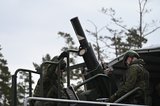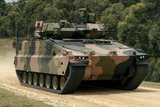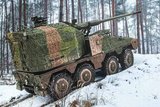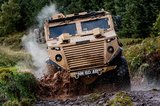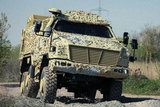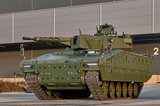Tiberius Aerospace promises big on capability and accuracy with new artillery rocket
An artist’s impression of Sceptre in flight. (Image: Tiberius Aerospace)
If promises are kept, the Sceptre liquid-fuelled ramjet-powered 155mm artillery rocket from Tiberius Aerospace could be a game changer both in capability and how the rocket is supported, as well as its spiral development programme.
The company was founded by serial high-technology entrepreneurs, chief strategy officer Andy Baynes and CEO Chad Steelberg, who outlined the capability and expectations of Sceptre on 19 May.
Sceptre is described by the company as a 155mm ramjet extended-range precision-guided ballistic munition capable of reaching speeds of Mach 3.5 and altitudes in excess of 65,000ft, which is beyond jamming range. It has a length of
Already have an account? Log in
Want to keep reading this article?
More from Land Warfare
-
![The British Army’s Land Mobility Programme – all change but no progress?]()
The British Army’s Land Mobility Programme – all change but no progress?
The UK’s Land Mobility Programme, an effort to replace thousands of British Army vehicles, may be about to undergo a radical change in direction.
-
![Supacat and KNDS join forces for British Army vehicle programme]()
Supacat and KNDS join forces for British Army vehicle programme
The Land Mobility Programme is the biggest UK opportunity for the next few decades if it all falls into place. Companies have been filling their dance cards as milestones approach in the hope they are not the mirages of the past.
-
![Romania set to order KF41 Lynx infantry fighting vehicles]()
Romania set to order KF41 Lynx infantry fighting vehicles
Romania’s effort to buy infantry fighting vehicles is expected to include five configurations: a standard platform with a 30mm autocannon, a command variant, an armoured recovery vehicle, a medical evacuation vehicle and a 120mm self-propelled mortar.
-
![Team LionStrike polishes British Army vehicle offering for Land Mobility Programme]()
Team LionStrike polishes British Army vehicle offering for Land Mobility Programme
Team LionStrike has demonstrated its offering for the British Army’s Land Mobility Programme with plans to bid the Chevrolet Silverado and two variants of the platform: the Infantry Squad Vehicle and General Support Utility Platform.








